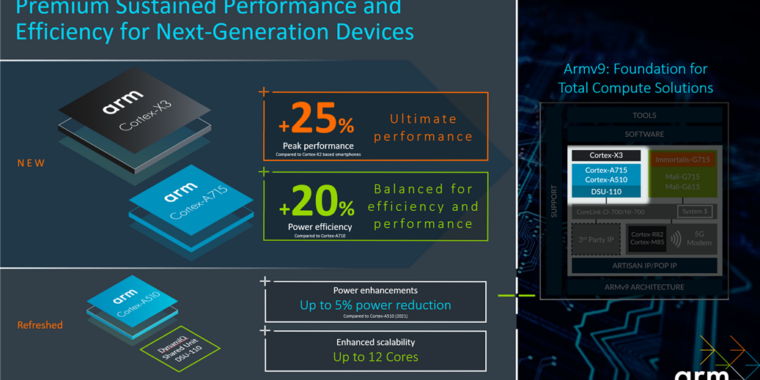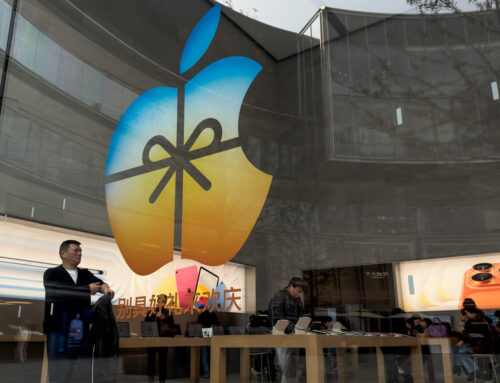Let’s hope Arm’s claims are actually true this year —
Arm’s new chips completely drop 32-bit support, which might cause problems.
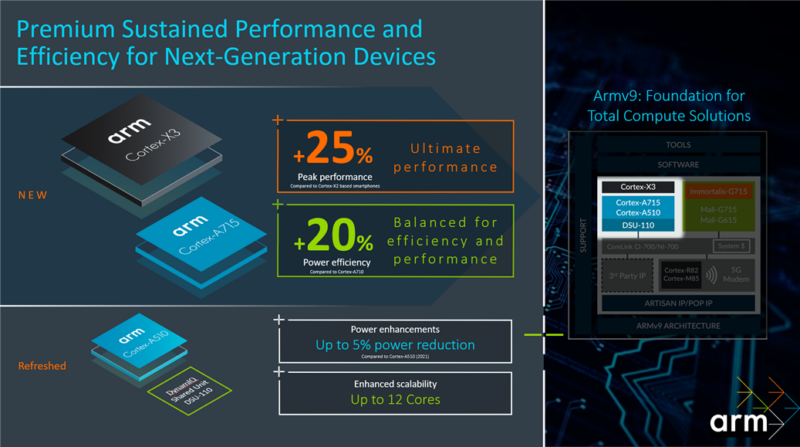
Enlarge / The Arm Cortex X3 brings some modest improvements.
Arms
Fresh off a dramatic journey of not being bought by Nvidia, Arm announced its latest flagship CPUs. Coming soon to your 2023 Android devices, we have the Cortex-X3 and Arm Cortex-A715 CPUs.
As usual, these designs will be part of a system-on-chip CPU cluster. Assuming the normal layout, Arm’s proposed design would have a 2023 SoC with one big Cortex-X3 core, three medium-core Cortex-A715 CPUs, and four little Cortex-A510 cores, which are returning from the current generation.
Arm is promising the X3 CPU will 25 percent performance improvement over the X2, while the Cortex A715 is claiming a “20 percent energy efficiency gain and 5 percent performance uplift” compared to the current-gen Cortex A710. Arm claims the A715 is as fast as the Cortex X1 CPU from 2020. The A715 also drops 32-bit support, making it the last part of our theoretical flagship SoC to go 64-bit only. The smaller A510 CPU is returning, but Arm says it is “an updated version” with a 5 percent power reduction.
A 25 percent year-over-year improvement for just the biggest CPU won’t set any benchmark charts on fire. For reference, our testing showed Apple’s A15 is around 38 percent faster (in single and multi-core tests) than the best Android phones, and only boosting the single big CPU by 25 percent will mean 2023 Android phones will still be much slower than a 2021 iPhone. Apple uses the Arm architecture but not Arm’s designs, as Apple seems to be a better Arm chip designer.
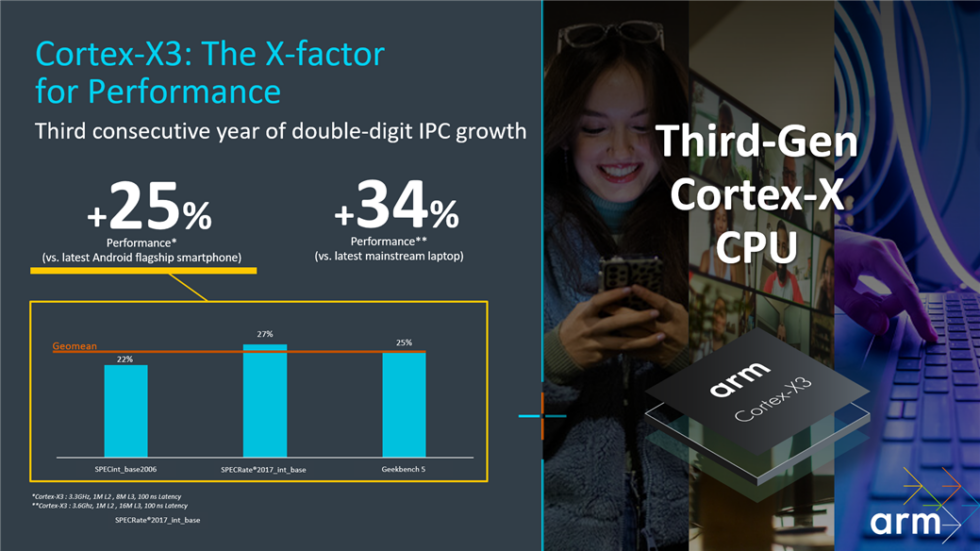
Enlarge / The Arm Cortex X3 brings some modest improvements.
Arm
An arm’s-length distance from actual products
Arm’s announcement is only of designs that other companies can use for a real consumer chip, and most of the time that means Qualcomm or Samsung SoC. The distance between Arm and a final product means you have to take the company’s projected performance claims with a grain of salt, since it still has to be filtered through someone else’s execution of Arm’s design. Last year, none of Arm’s X2 projections really came true. The company promised a “30 percent faster” CPU, when in reality, the X2-based chips in the market were slower or equal to X1 chips from the previous year.
There are already rumors that Qualcomm won’t use Arm’s suggested SoC design layout for its 2023 chip, the Snapdragon 8 Gen 2 SoC. The rumor claims Qualcomm’s layout would be one Cortex X3, two Cortex A720s, two A710 CPUs from the current generation, and three A510 CPUs. The justification for this would be that Qualcomm doesn’t want to drop 32-bit support entirely yet for the Chinese market, and dragging two A710 CPUs from 2022 into next year would keep the 32-bit train going.
Arm also announced a new GPU design, which is typically not used by most vendors. Qualcomm has its own GPU division, Adreno, and Samsung now makes GPUs with AMD. Your best bet to see a flagship Arm GPU in a product is with a rare flagship Mediatek SoC. For what it’s worth, the new ARM GPU has a new branding called the “Immortalis GPU.” The Immortalis-G715 is the first Arm-designed GPU with hardware ray tracing (Samsung and AMD announced a similar feature last year). Arm claims the GPU is 15 percent faster than last year.
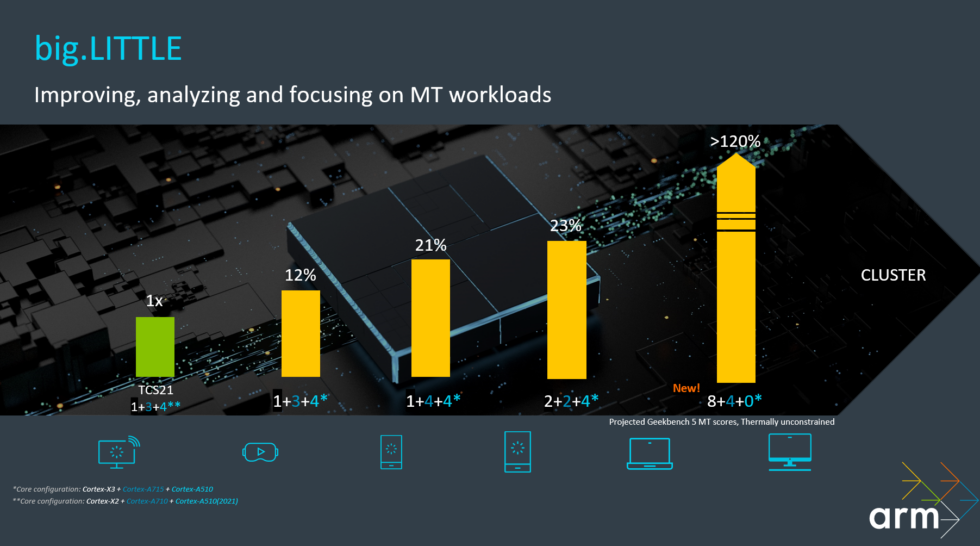
Enlarge / Arm is telling its partners to go crazy with big, M2-fighting chip designs, but we’re not sure anyone is listening.
Arm
Arm is also hoping vendors will scale up Arm chips with SoC designs meant for laptops and desktops. The company pitched a new configuration that would involve eight X3 CPUs, four A715 CPUs, and zero little cores. Arm tried floating the same idea last year when it suggested a chip with eight X2 CPUs, but we don’t think anyone took the company up on that offer. Qualcomm plans on eventually attacking the laptop market in late 2023 with chips designed by its Nuvia acquisition.
Listing image by Arm

